The document covers fundamental concepts of data representation, data types, data structures, algorithms, and memory management in C++. It explains pointers, their declaration, and usage in dynamic memory allocation, including practical examples. The content also emphasizes the importance of optimized algorithms and includes references for further reading.

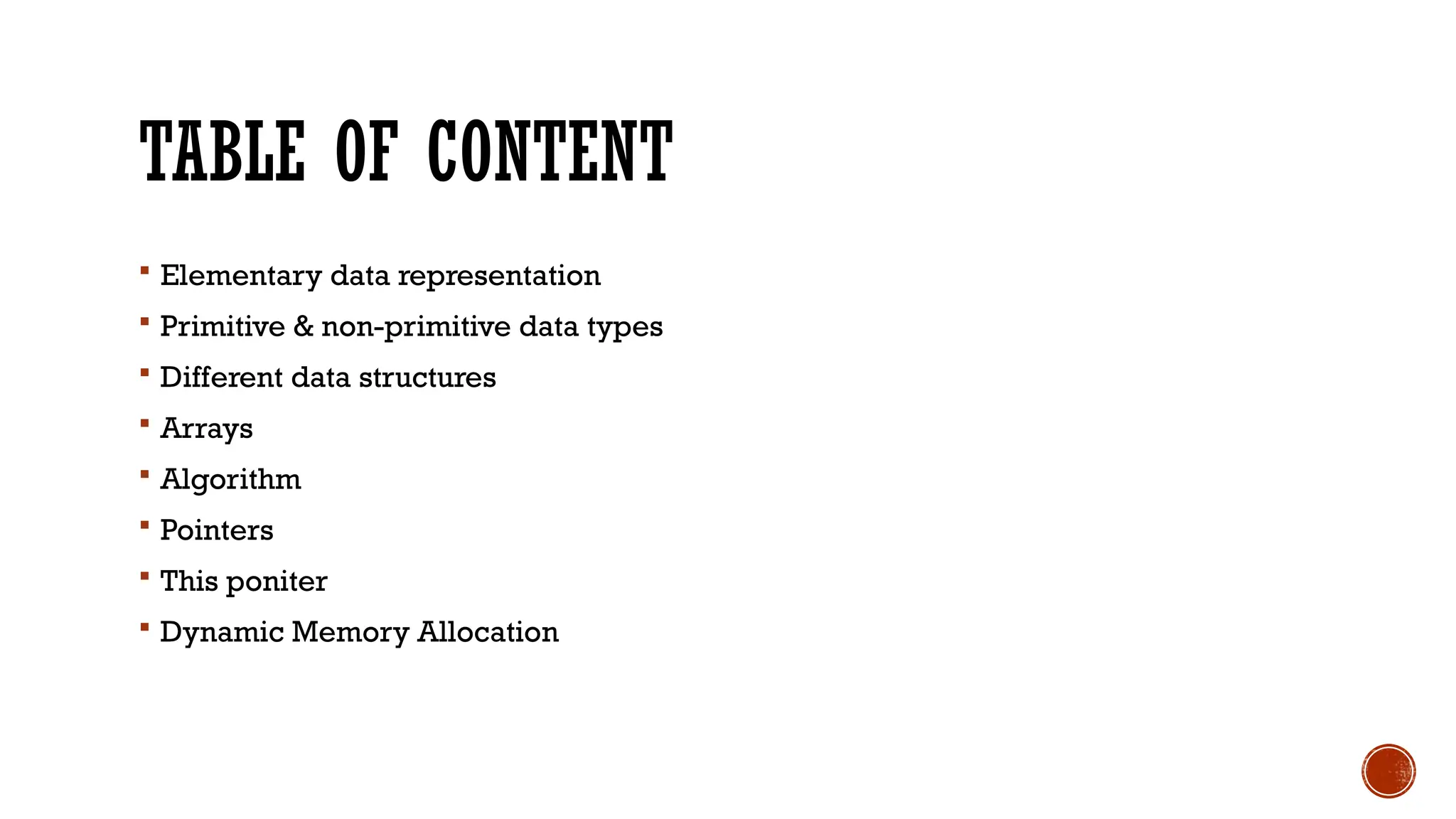
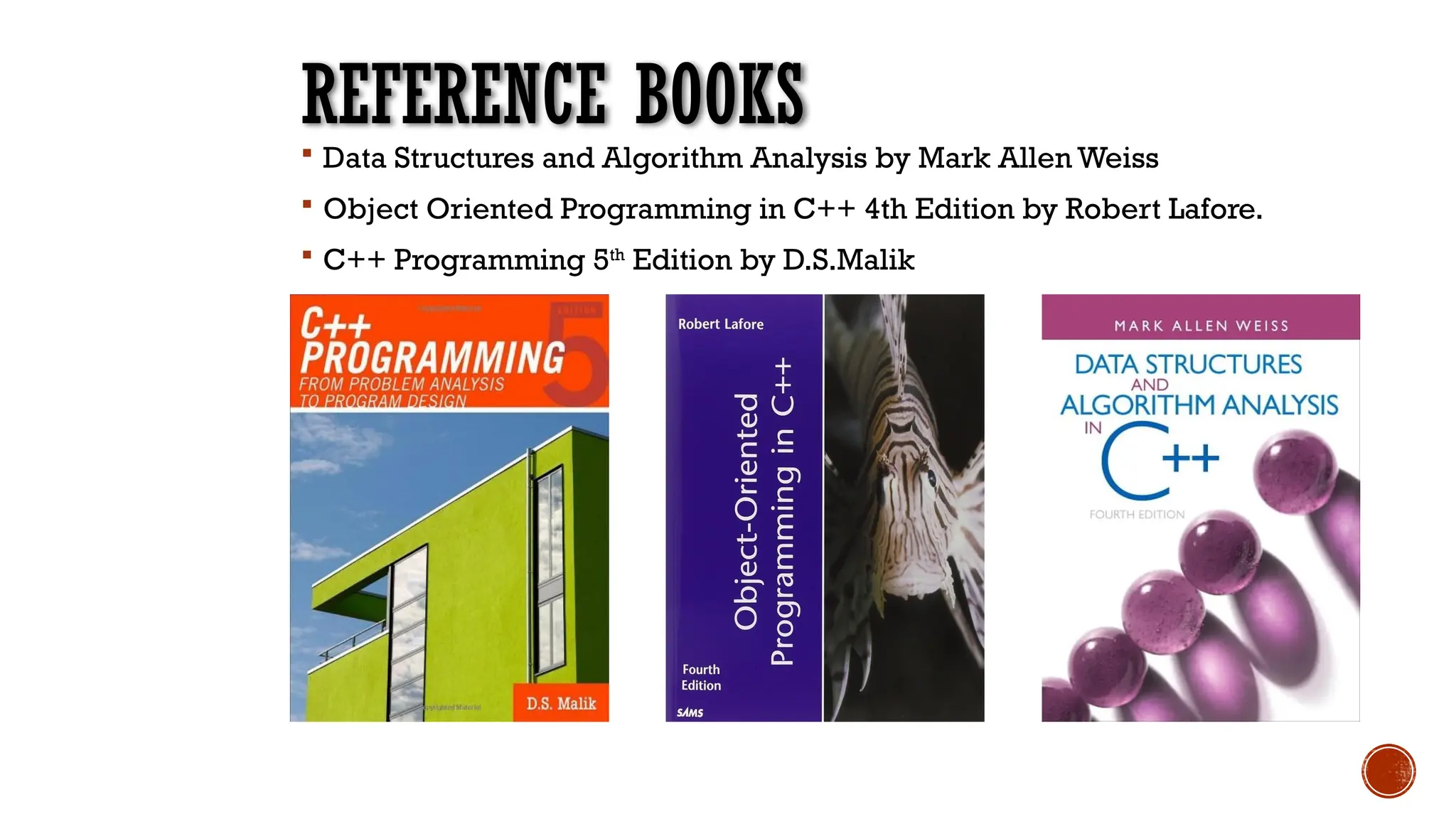
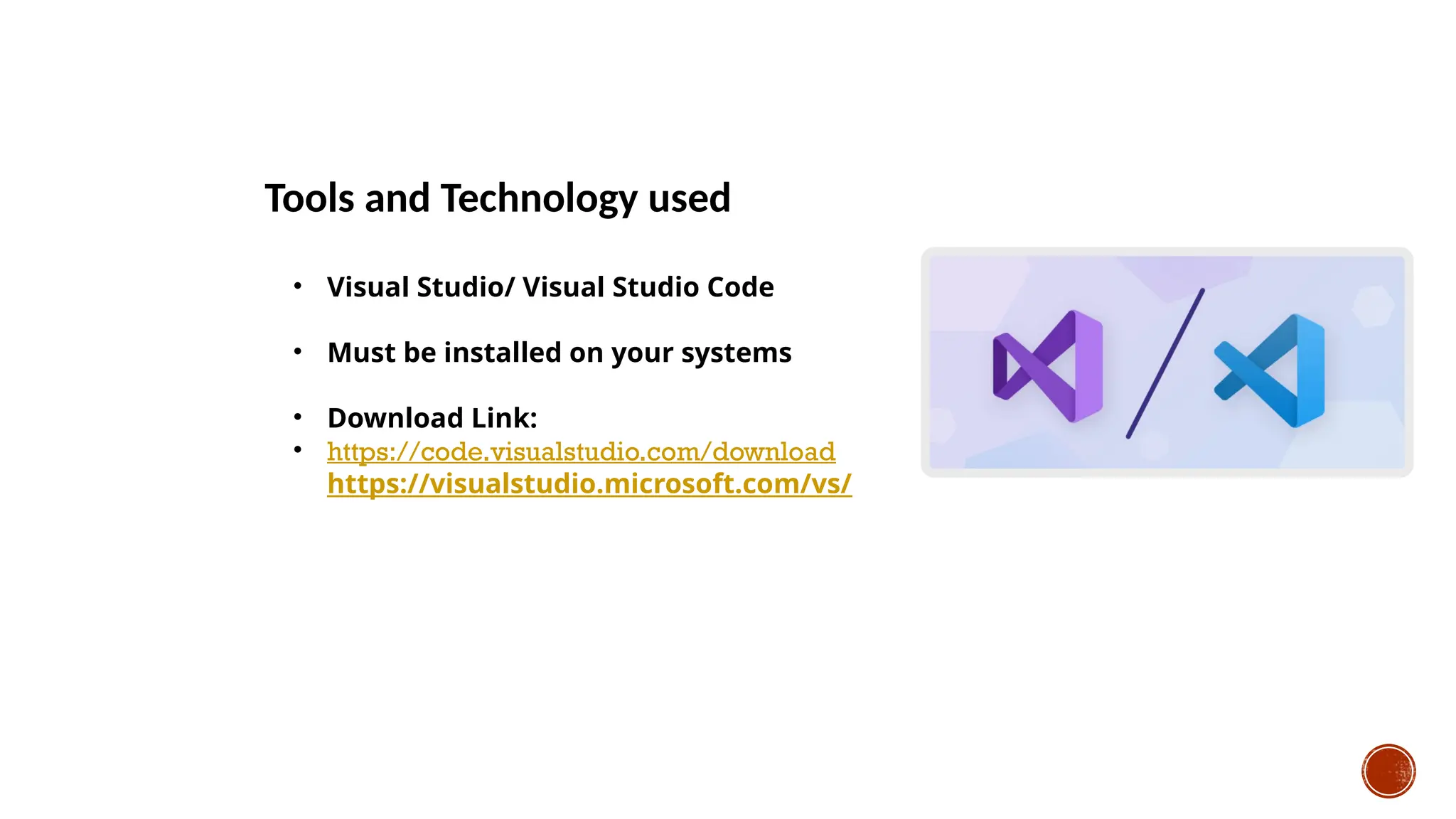
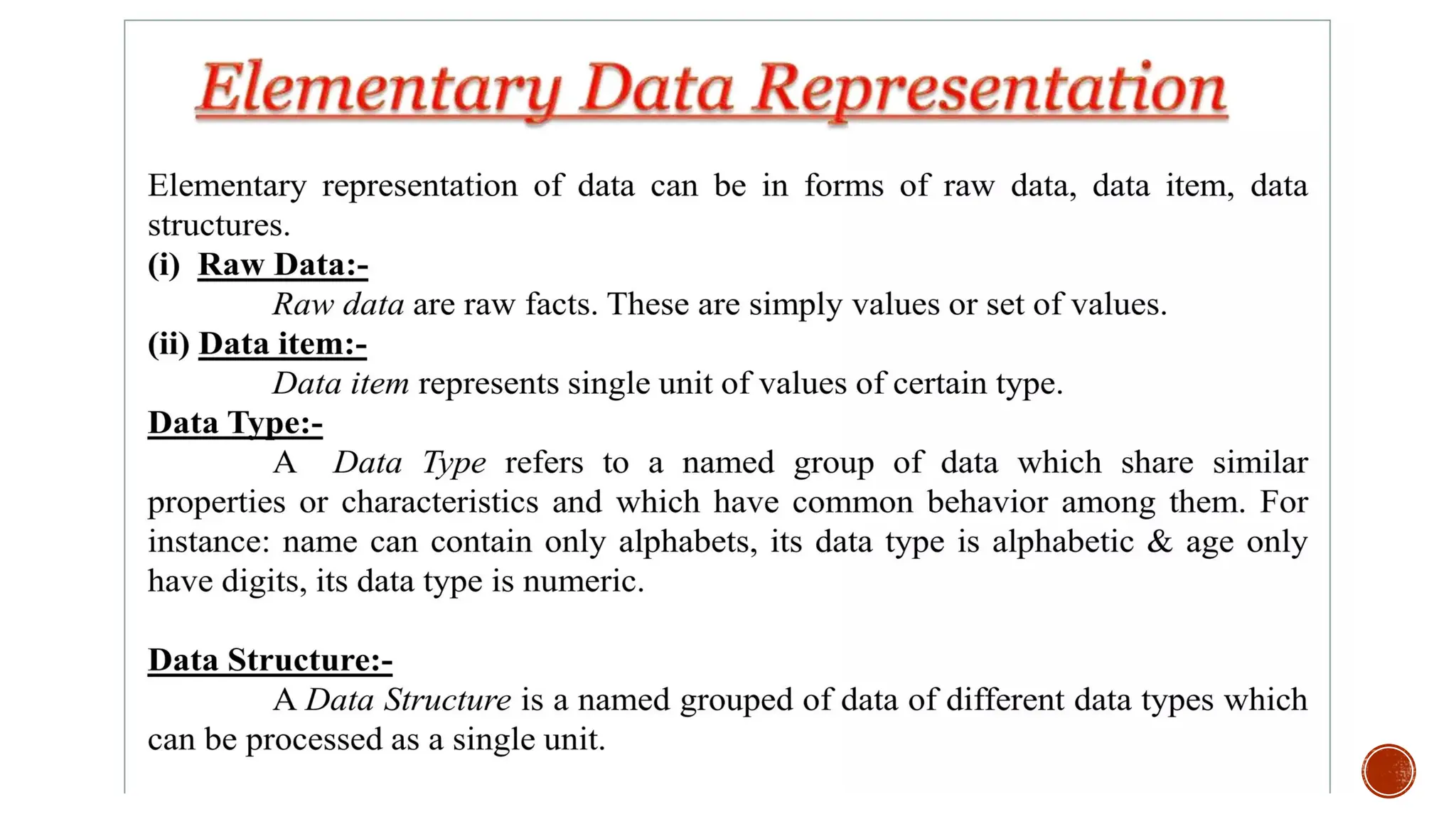
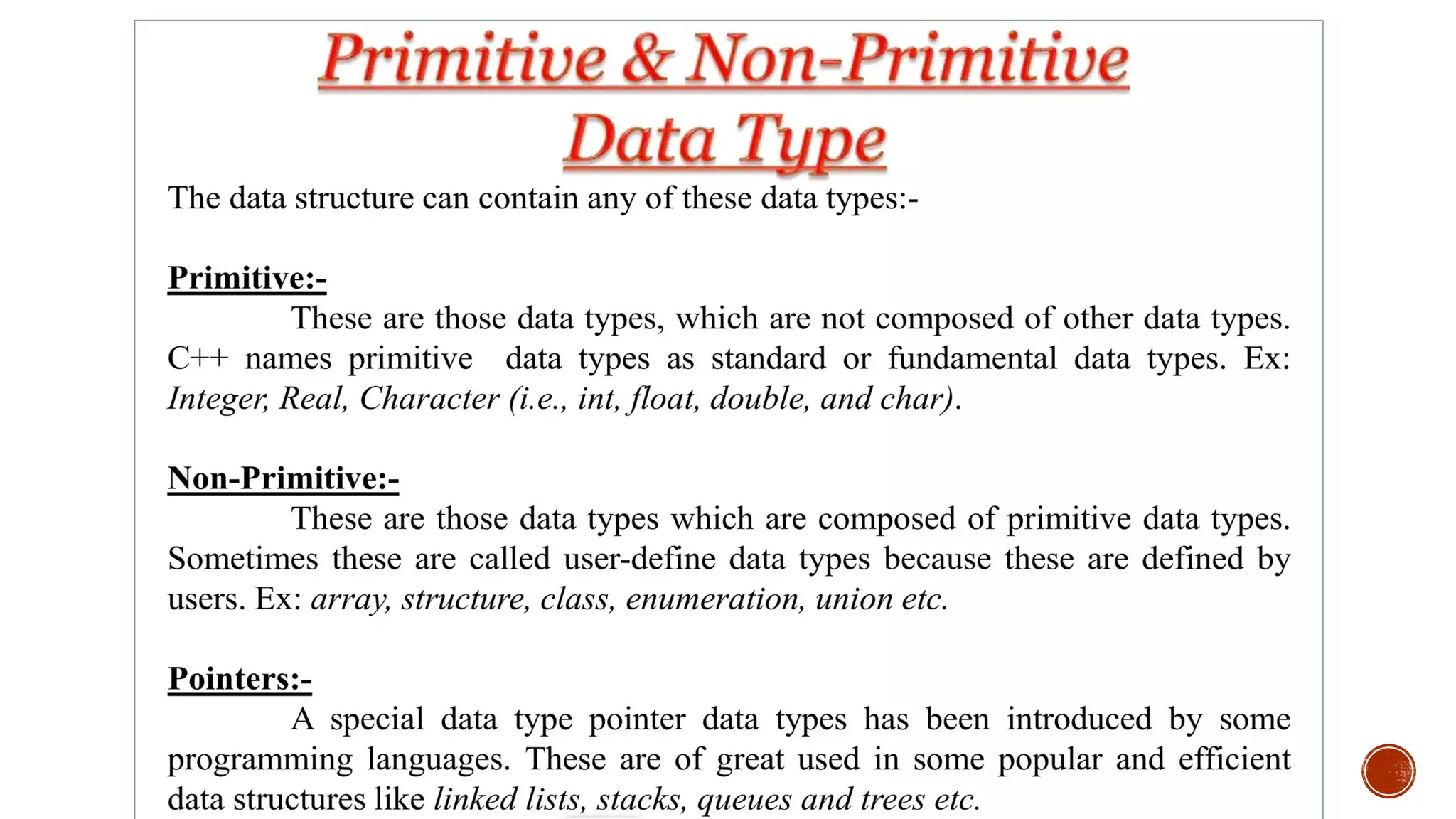
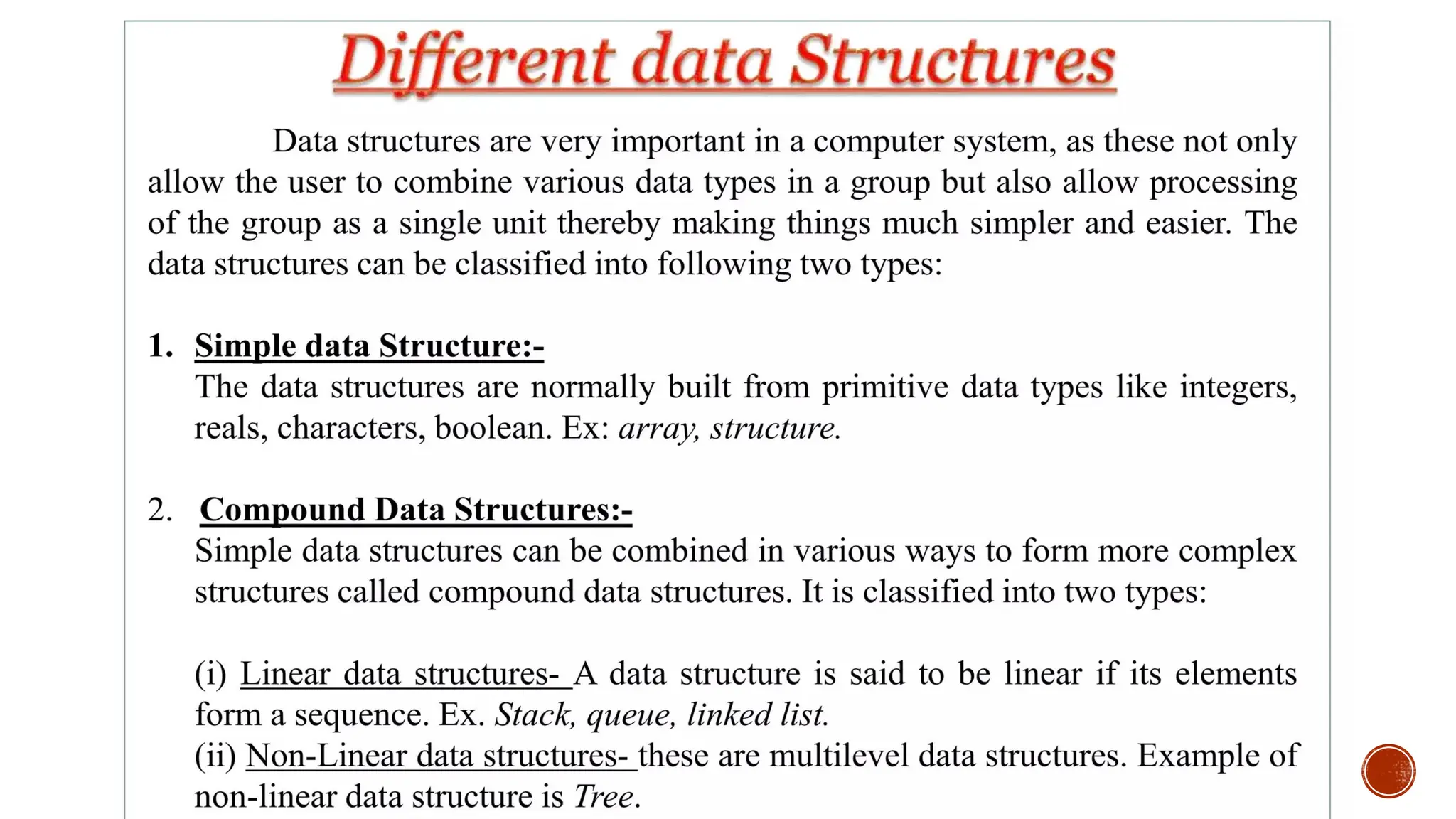
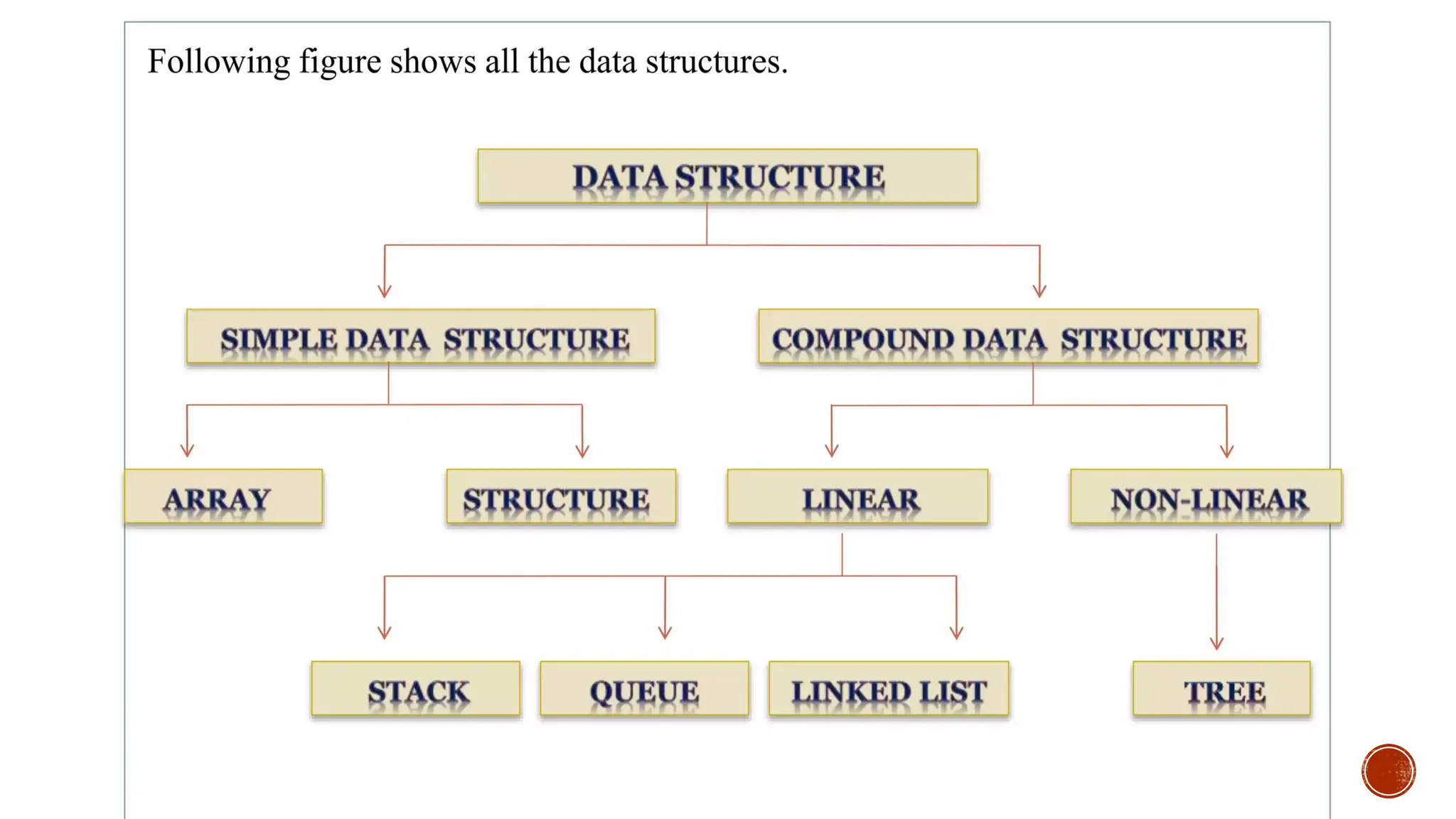
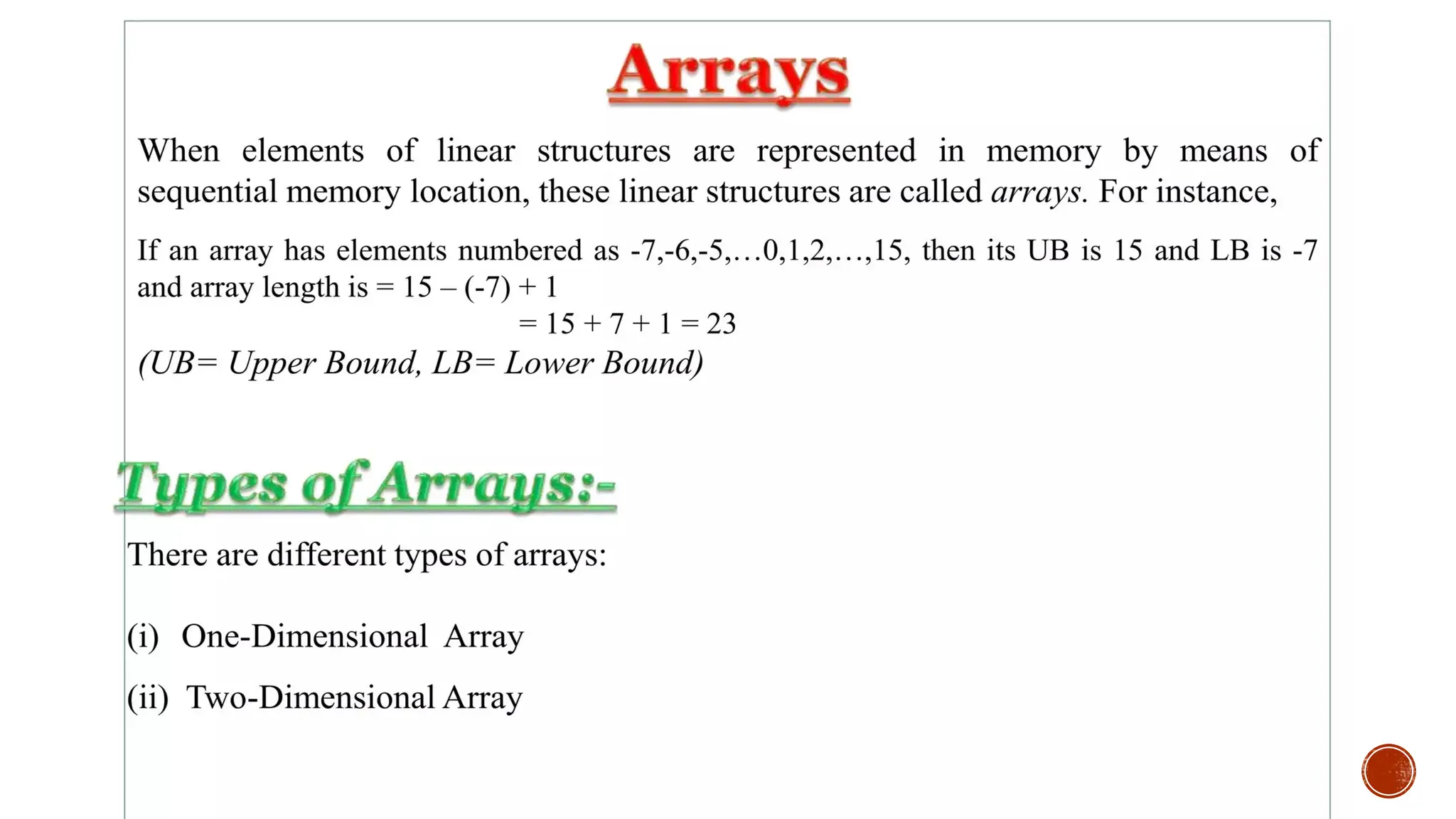
![#include<iostream>
using namespace std;
int main()
{
int arr[10];
for(int i=0;i<10;i++)
{
cout<<"enter a number:";
cin>>arr[i];
}
cout<<"data in array: n";
for(int i=0;i<10;i++)
{
cout<<arr[i]<<endl;
}
}](https://image.slidesharecdn.com/datastructureandalgorithmsc-241029182204-fc9fb8e8/75/Data-structure-and-Algorithms-C-pptx-10-2048.jpg)
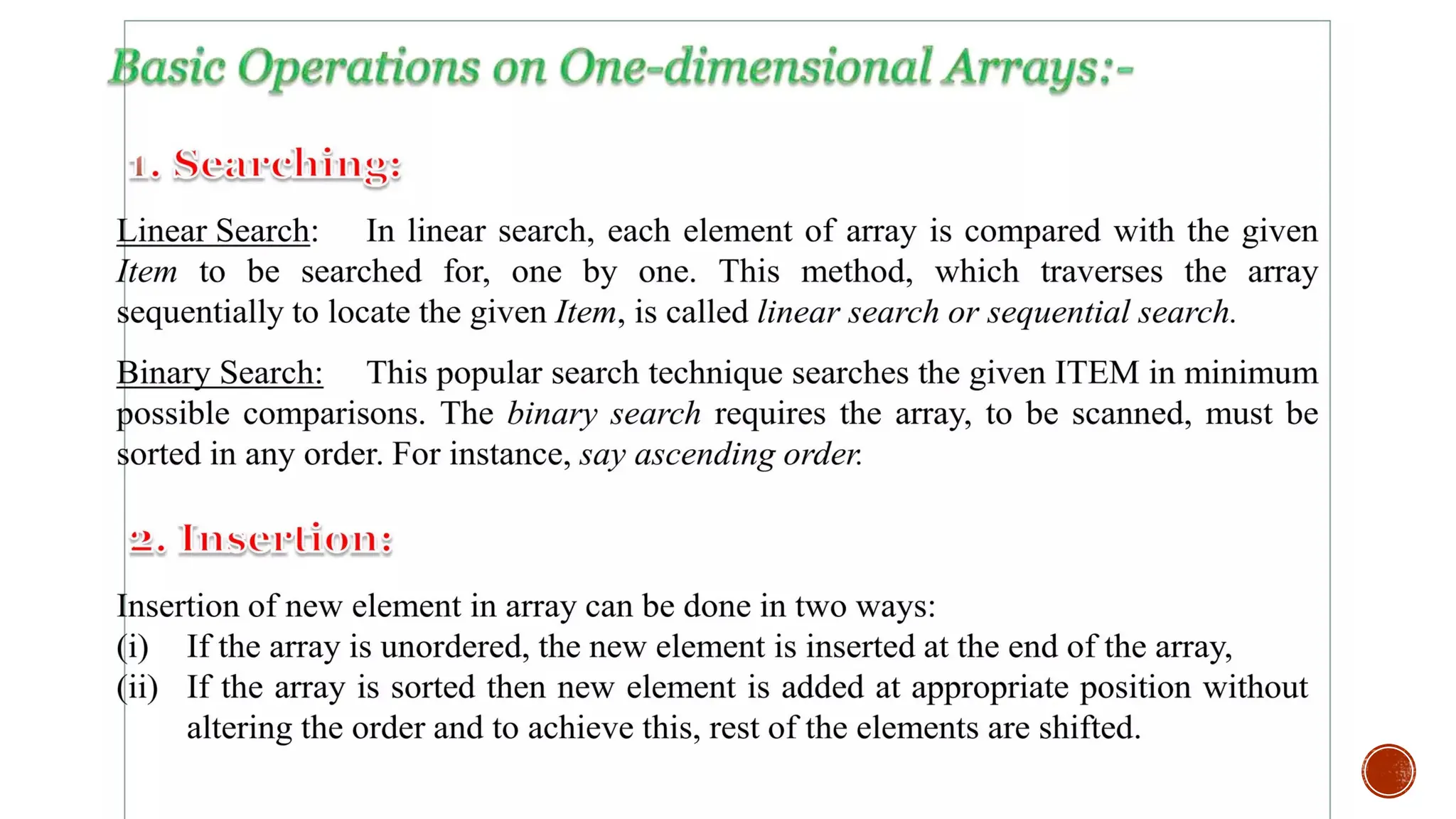
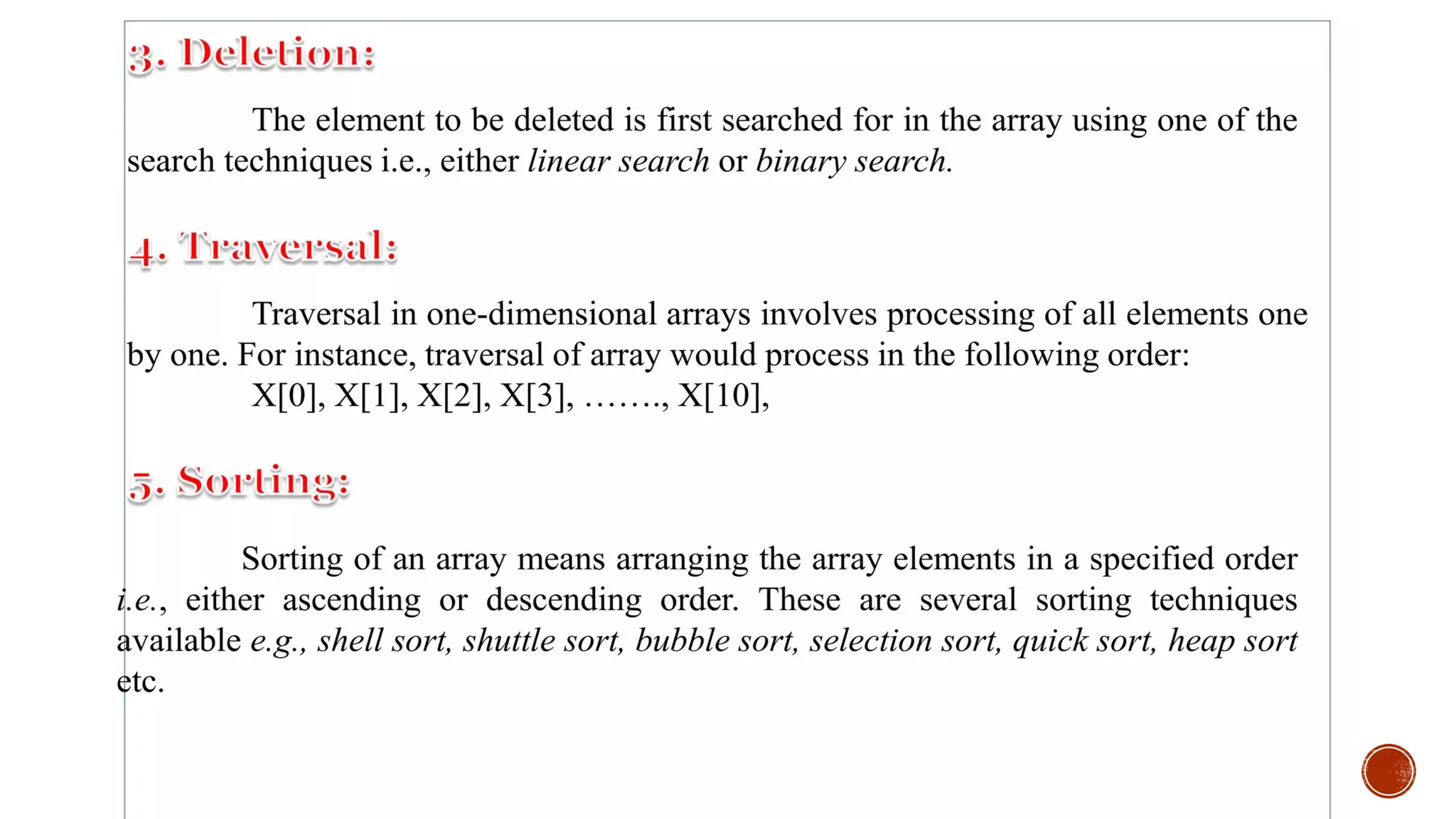
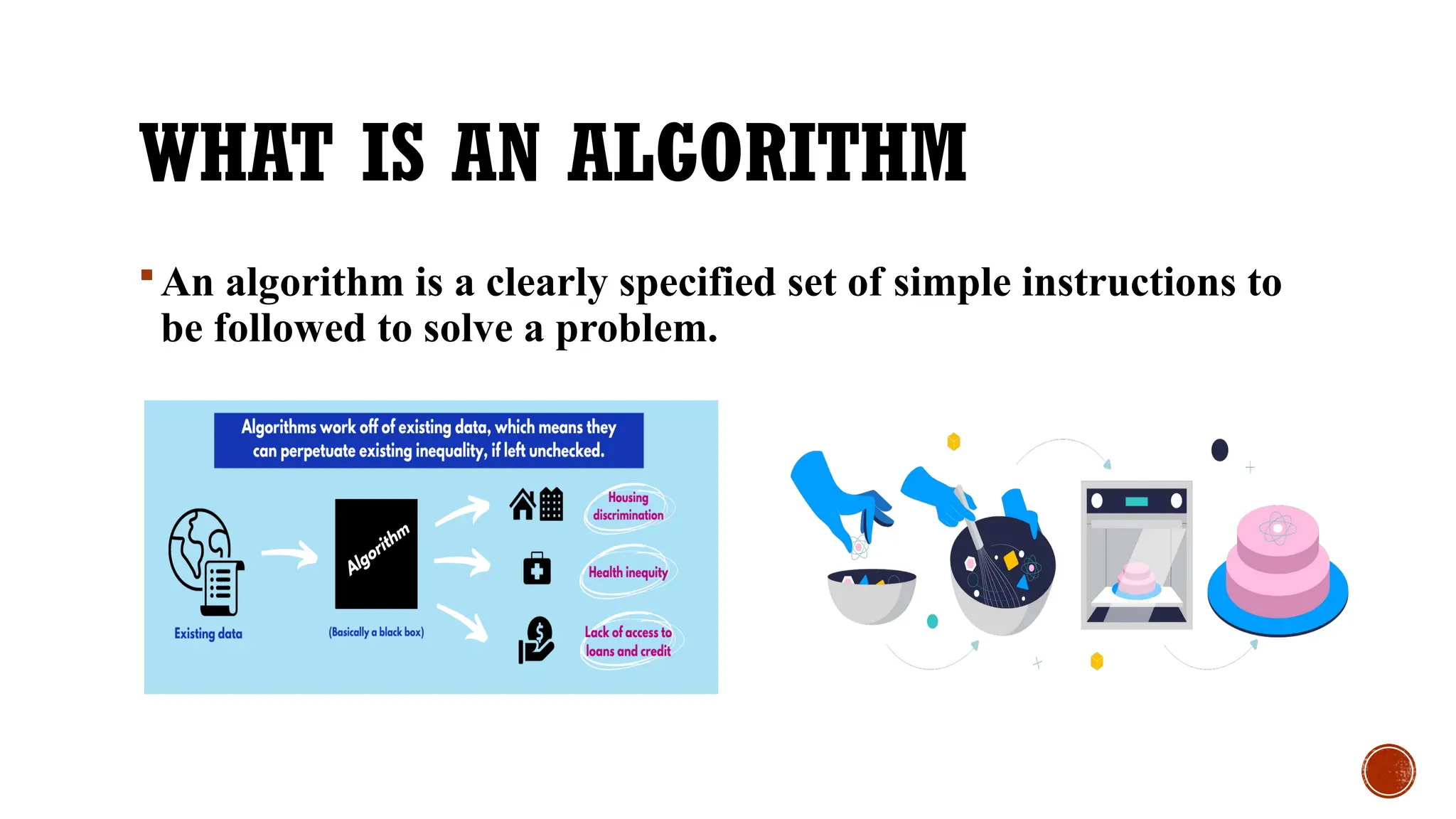
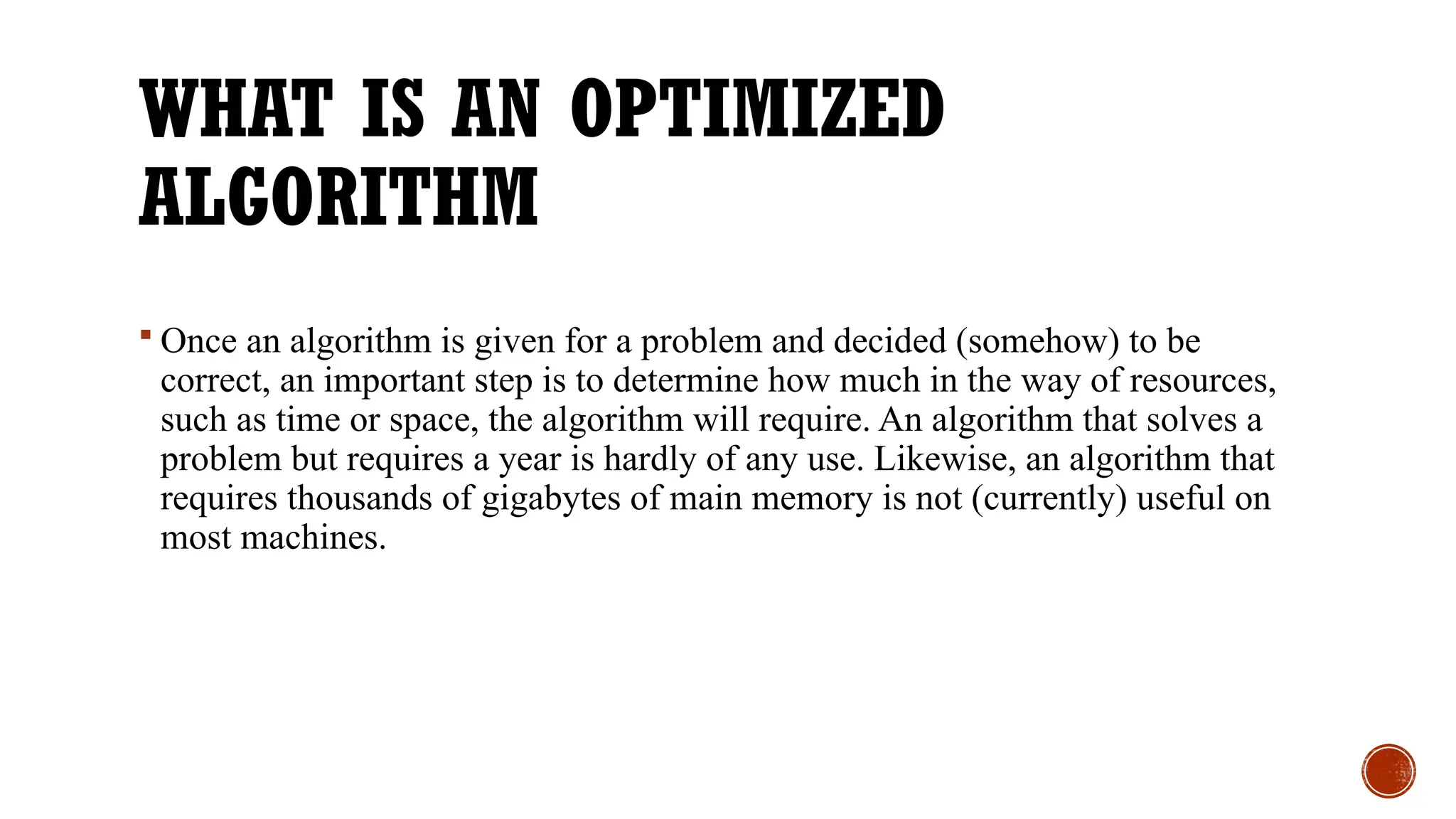
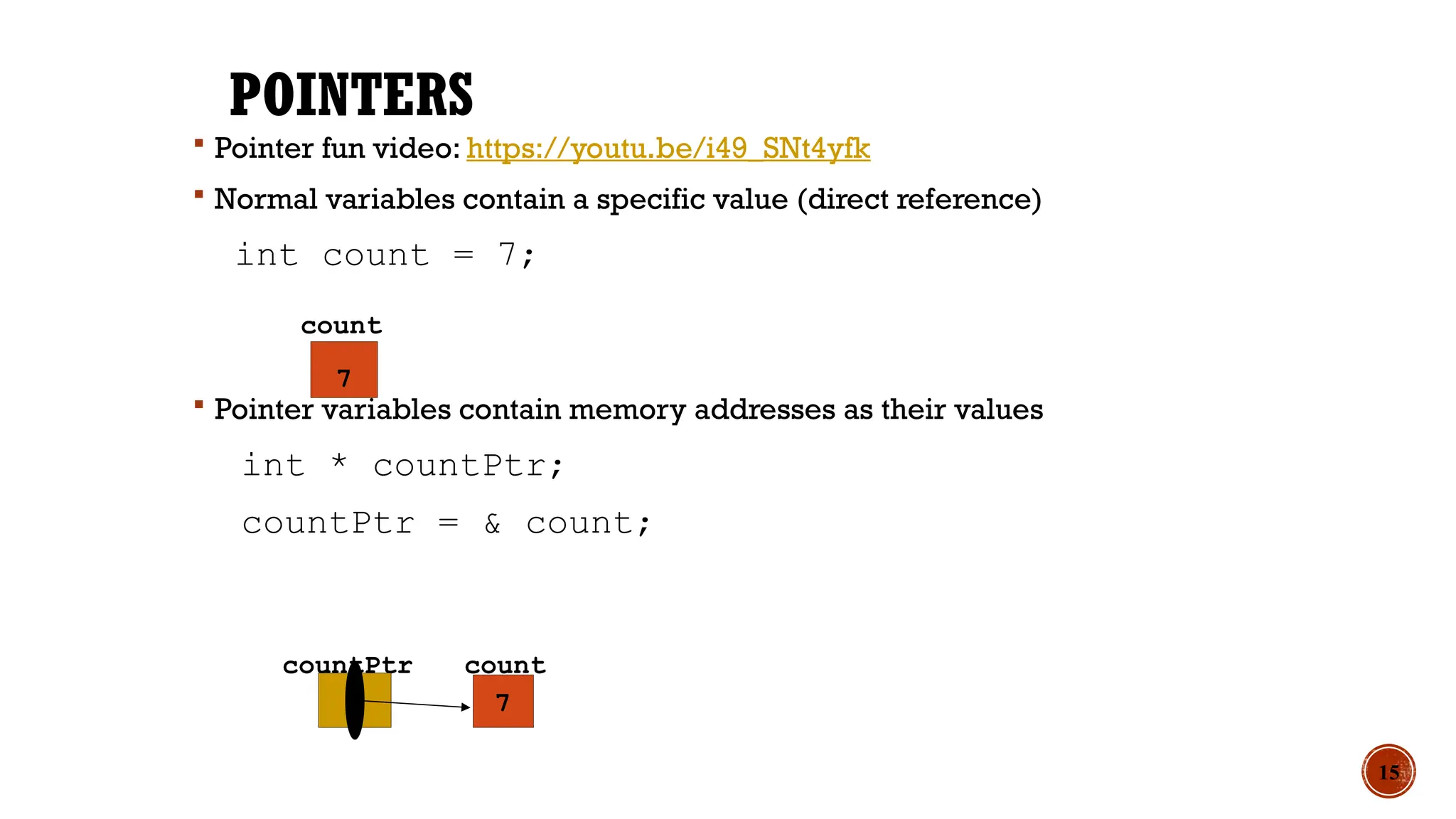
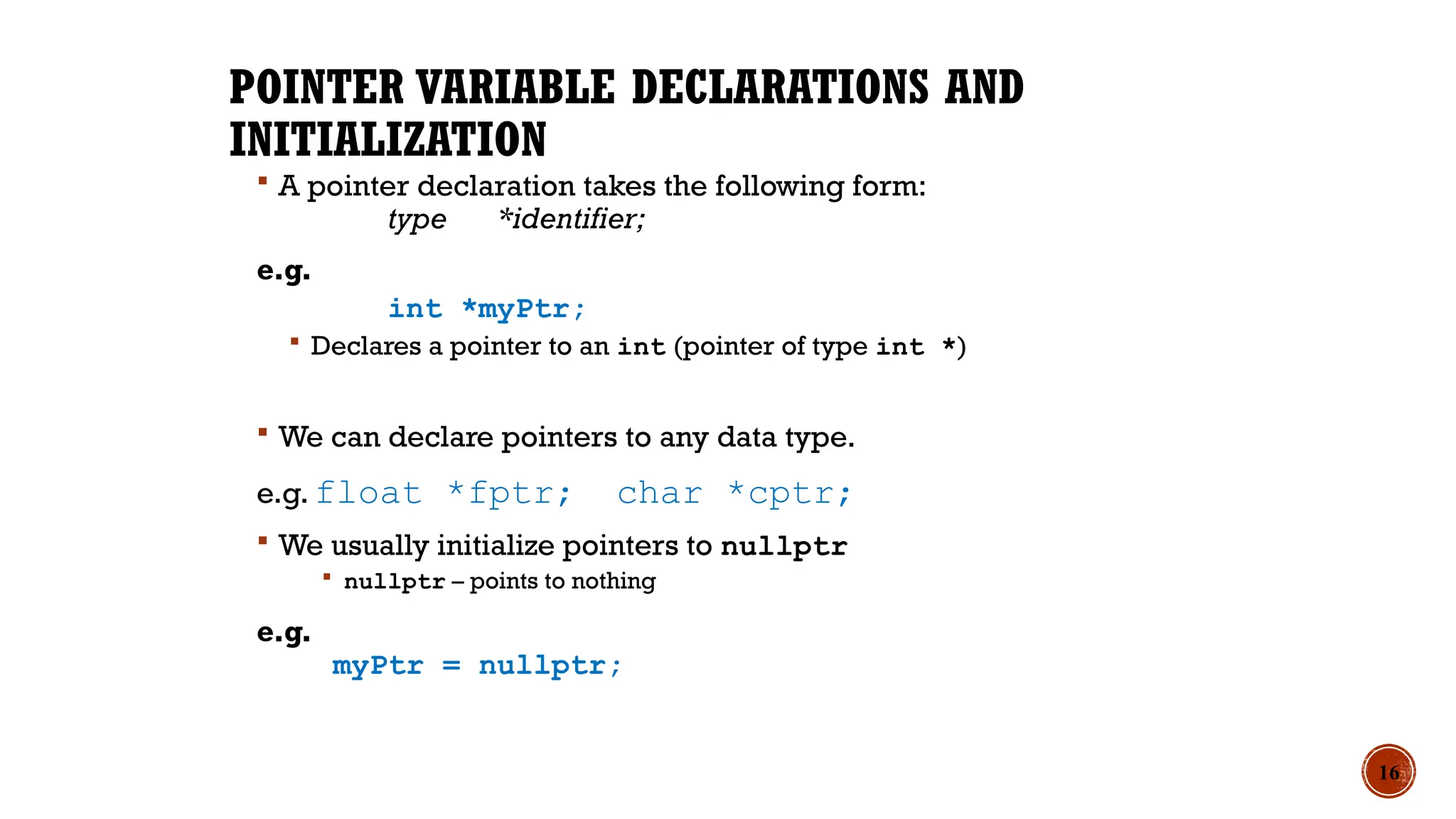
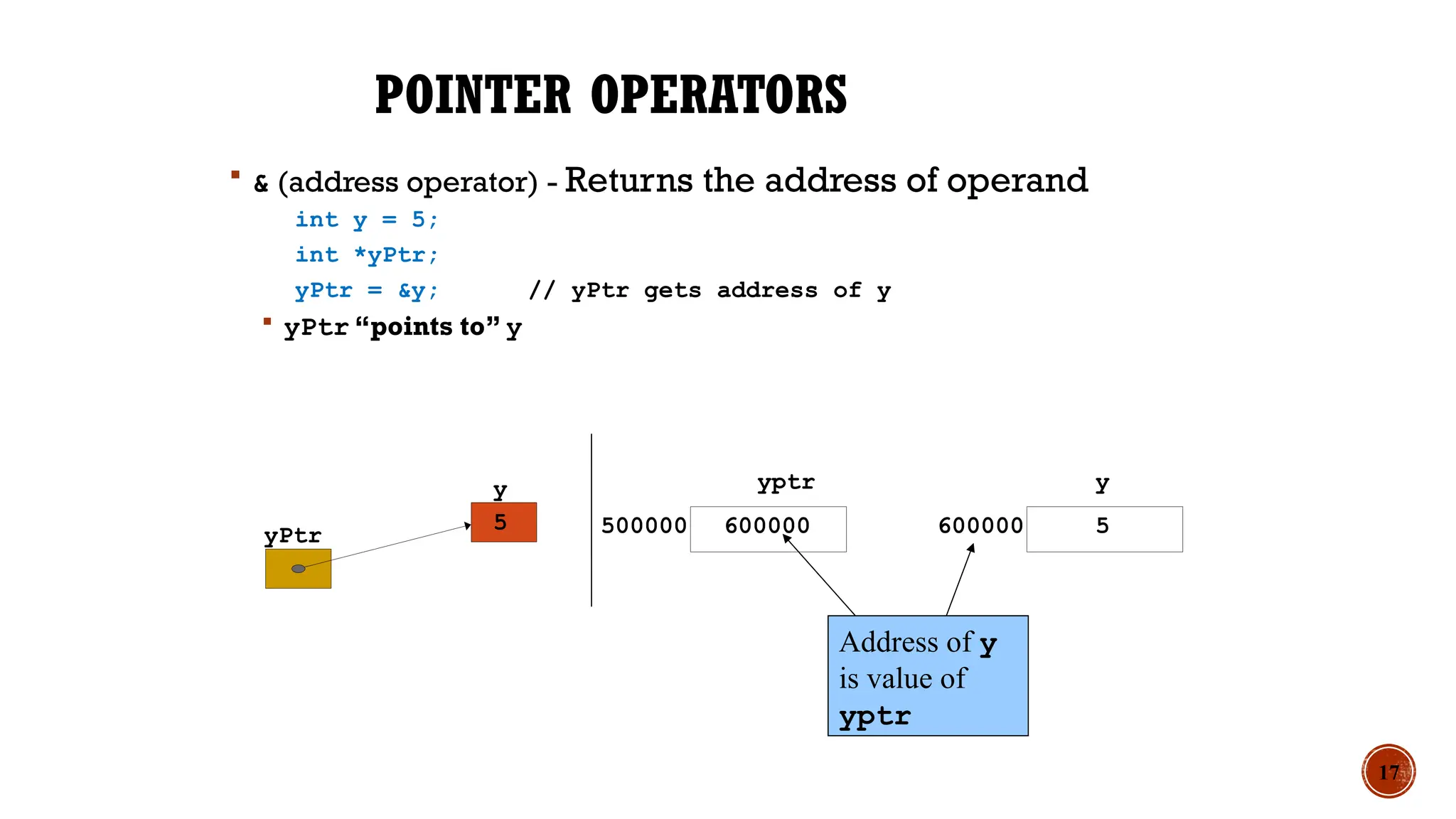
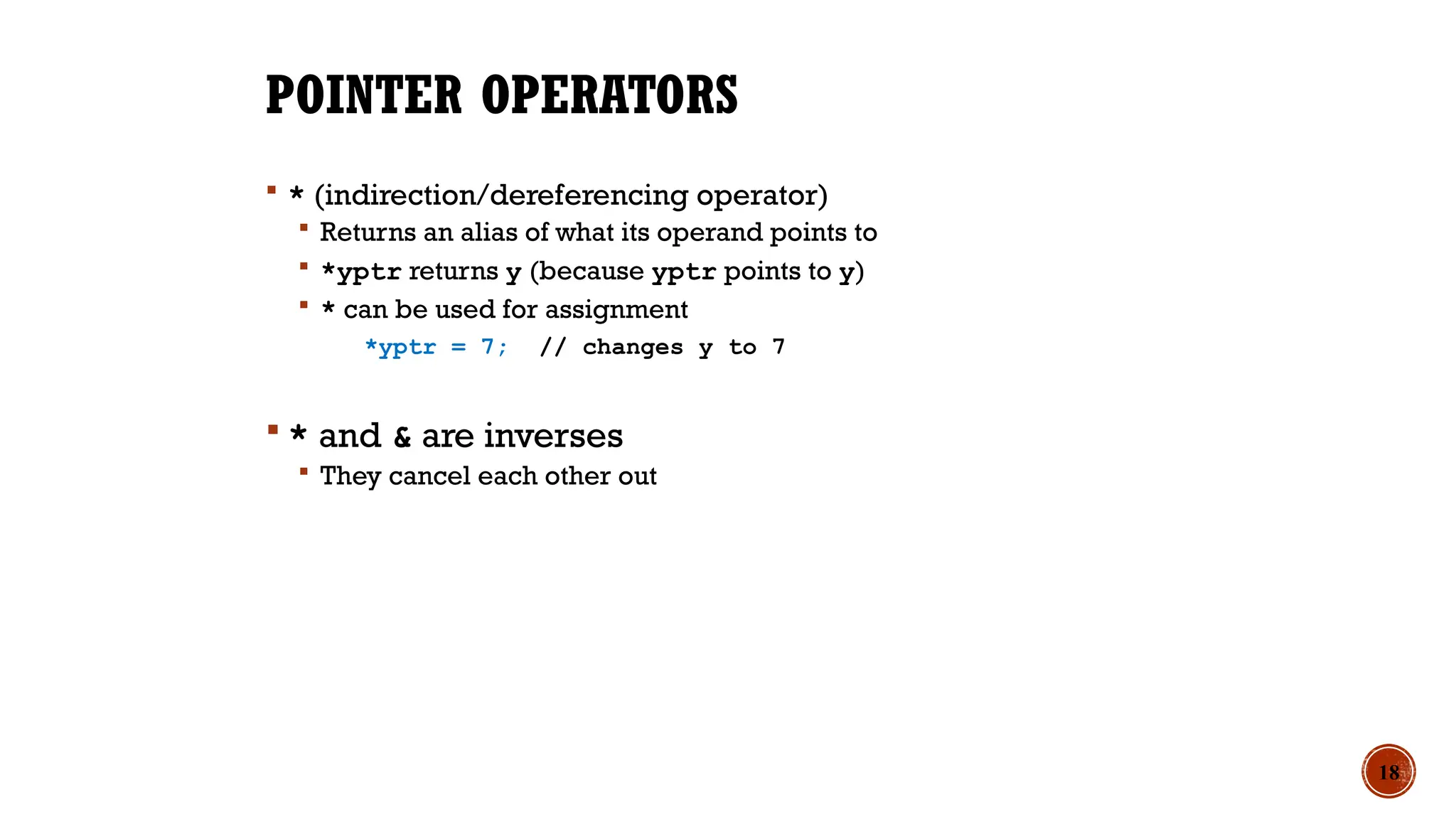
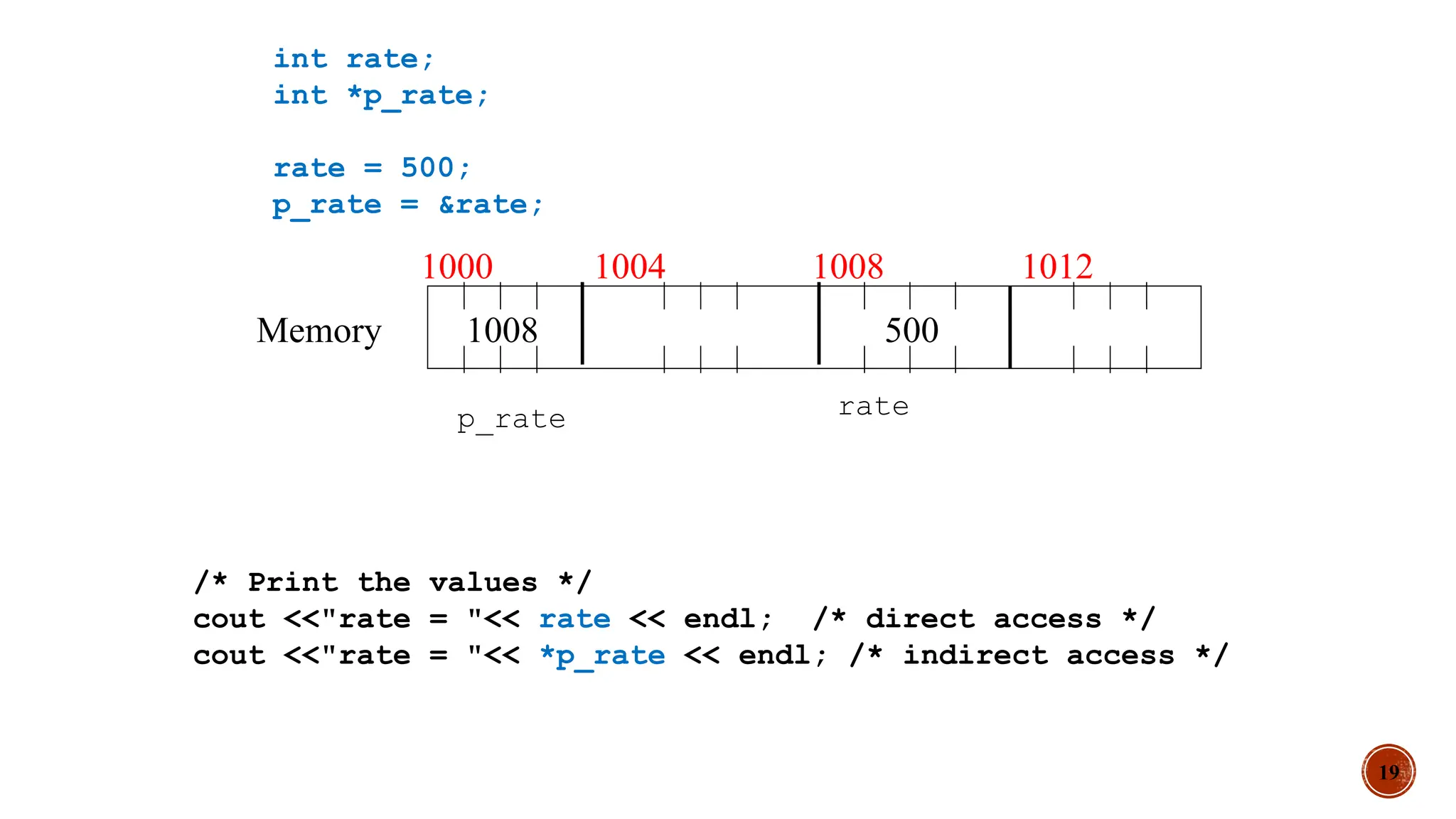
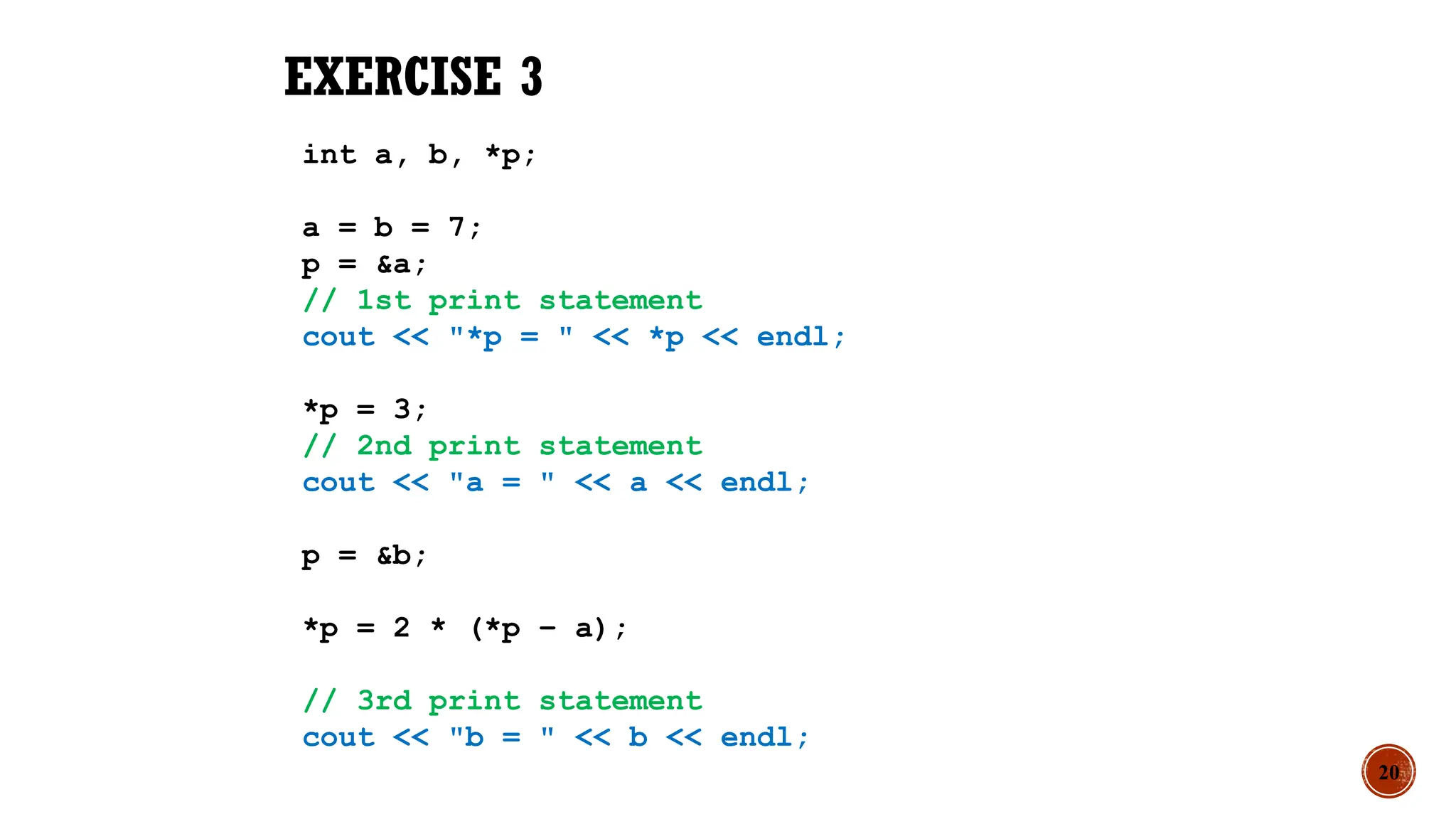
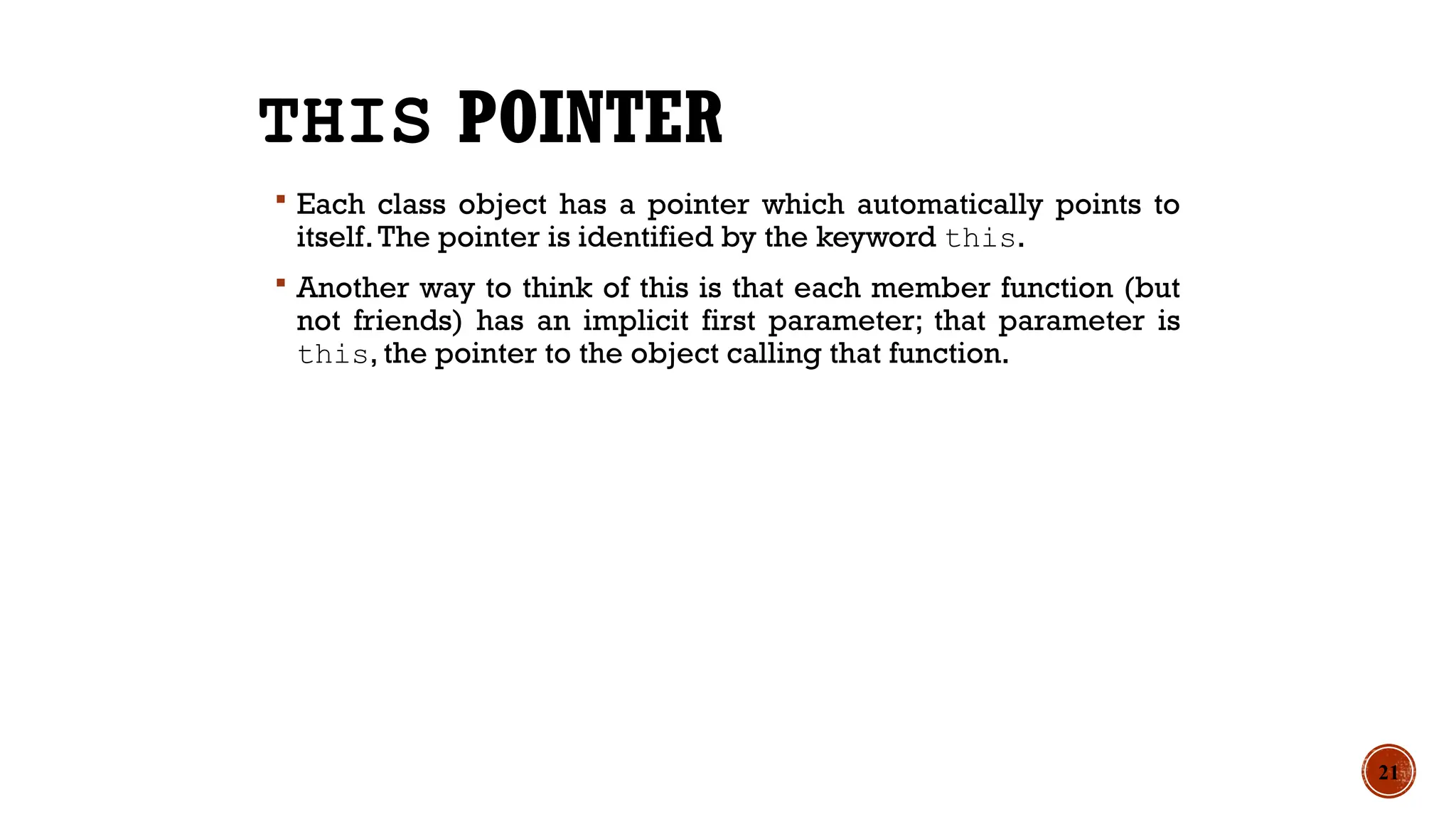
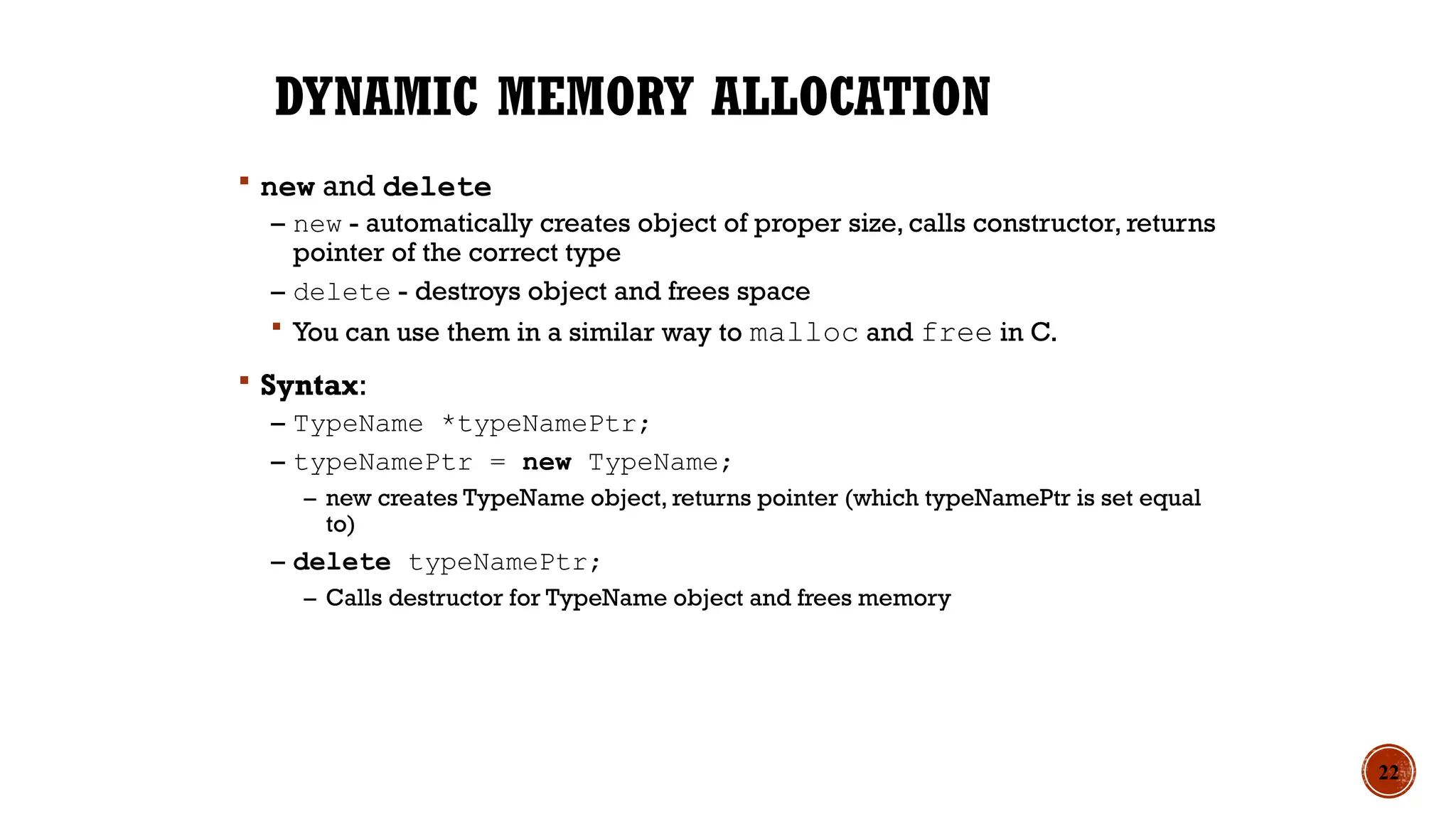
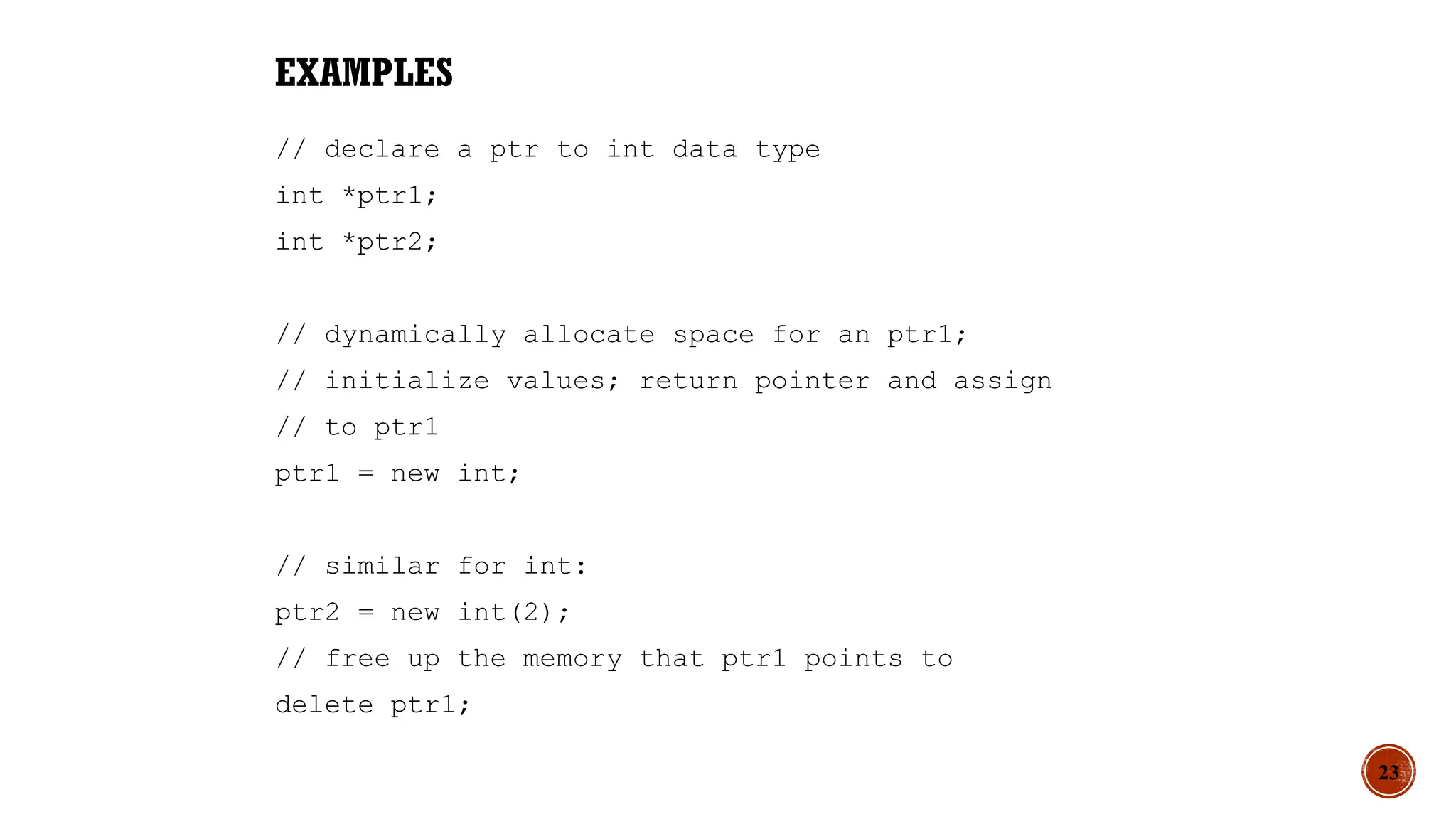
![24
// dynamically allocate array of 23
// Int slots
// each will be initialized to 0
ptr1 = new int[23];
// similar for ptr2
ptr2 = new int[12];
// free up the dynamically allocated array
delete [] ptr1;](https://image.slidesharecdn.com/datastructureandalgorithmsc-241029182204-fc9fb8e8/75/Data-structure-and-Algorithms-C-pptx-24-2048.jpg)